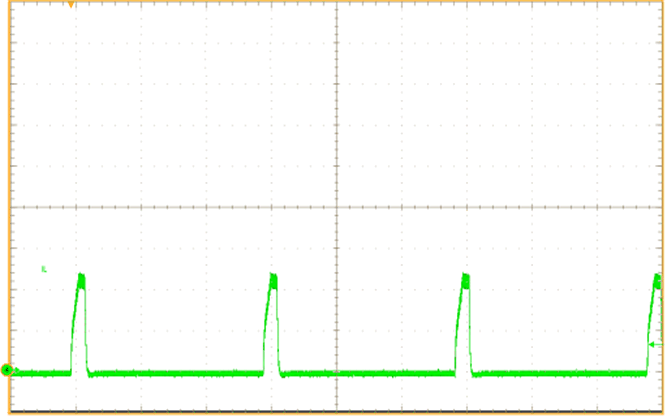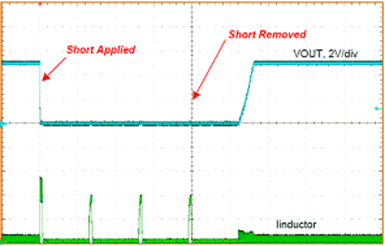JAJSR90 September 2023 LMQ644A2-Q1
PRODMIX
- 1
- 1 特長
- 2 アプリケーション
- 3 概要
- 4 Revision History
- 5 Device Comparison Table
- 6 Pin Configuration and Functions
- 7 Specifications
-
8 Detailed Description
- 8.1 Overview
- 8.2 Functional Block Diagram
- 8.3
Feature Description
- 8.3.1 Input Voltage Range (VIN)
- 8.3.2 Enable EN Pin and Use as VIN UVLO
- 8.3.3 Output Voltage Selection and Soft Start
- 8.3.4 SYNC Allows Clock Synchronization and Mode Selection
- 8.3.5 Clock Locking
- 8.3.6 Adjustable Switching Frequency
- 8.3.7 Power-Good Output Voltage Monitoring
- 8.3.8 Internal LDO, VCC UVLO, and BIAS Input
- 8.3.9 Bootstrap Voltage and VCBOOT-UVLO (CB1 and CB2 Pin)
- 8.3.10 CONFIG Device Configuration Pin
- 8.3.11 Spread Spectrum
- 8.3.12 Soft Start and Recovery From Dropout
- 8.3.13 Overcurrent and Short-Circuit Protection
- 8.3.14 Hiccup
- 8.3.15 Thermal Shutdown
- 8.4 Device Functional Modes
-
9 Application and Implementation
- 9.1 Application Information
- 9.2
Typical Application
- 9.2.1 Design Requirements
- 9.2.2
Detailed Design Procedure
- 9.2.2.1 Choosing the Switching Frequency
- 9.2.2.2 Setting the Output Voltage
- 9.2.2.3 Inductor Selection
- 9.2.2.4 Output Capacitor Selection
- 9.2.2.5 Input Capacitor Selection
- 9.2.2.6 BOOT Capacitor
- 9.2.2.7 VCC
- 9.2.2.8 CFF and RFF Selection
- 9.2.2.9 SYNCHRONIZATION AND MODE
- 9.2.2.10 External UVLO
- 9.2.2.11 Typical Thermal Performance
- 9.2.3 Application Curves
- 9.3 Power Supply Recommendations
- 9.4 Layout
- 10Device and Documentation Support
- 11Mechanical, Packaging, and Orderable Information
8.3.14 Hiccup
The LMQ644xx employs hiccup overcurrent protection to prevent overheating in the presence of a short circuit condition.
In dual output mode the part enters Hiccup when all of the following conditions are met for 128 consecutive switching cycles:
- A time greater than tSS2 has passed since soft start has started; see Section 8.3.12.
- Output voltage is below approximately 0.4 times output setpoint.
- The part is not operating in dropout defined as having minimum off-time controlled by duty factor.
In single output mode the part enters Hiccup when all of the following conditions are met for 128 consecutive switching cycles:
- COMP pin is at max of 1.1V
- The part is not operating in dropout defined as having minimum off-time controlled by duty factor.
In hiccup mode, the device shuts itself down and attempts to soft start after tW. Hiccup mode helps reduce the device power dissipation under severe overcurrent conditions and short circuits.
 Figure 8-14 Inductor Current Bursts During Hiccup
Figure 8-14 Inductor Current Bursts During Hiccup Figure 8-15 Short-Circuit Transient and Recovery
Figure 8-15 Short-Circuit Transient and Recovery